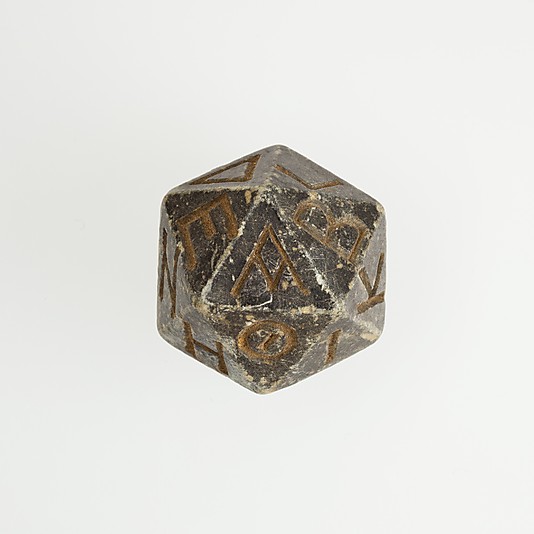Filtered By: Scitech
SciTech
Did the ancient Egyptians play Dungeons & Dragons?
By TJ DIMACALI, GMA News

Could the ancient Egyptians have been playing "Dungeons and Dragons" two hundred years before Jesus was born?
Likely not, but they could have.
Late last year, the New York Metropolitan Museum of Art (MMA) unveiled an ancient 20-sided die —an icosahedron— that dates back to 200 B.C.

Photo credit: New York Metropolitan Museum of Art
Modern, ancient significance Modern-day aficionados of tabletop role-playing games are very familiar with such die, whose multiple sides enable a wide variety of possible outcomes. The 20-sided or "d20" die is particularly associated with the "Dungeons and Dragons" game co-developed and popularized by writer Gary Gygax in 1974, although it's now used in a wide variety of games.
While it's not clear exactly how the d20 die was used in ancient times, it's still "a reminder that games of chance have existed for millennia," according to Michael Tresca, author of the book, The Evolution of Fantasy Role-Playing Games.
Tresca also pointed out that multi-sided shapes or "polyhedrons" held an almost mystical significance to the ancient Greeks, who saw them as representative of the order and structure of the Universe. The icosahedron was one of five polyhedrons known as "Platonic solids", and was believed to represent water. Plato argued that, having the most number of sides, the icosahedron rolls easily out of one's hand and therefore likely comprises the atomic structure of water.
Origins
The MMA said that the icosahedron in its possession can be traced back to the Ptolemaic to Roman Period, or between the 2nd century B.C. to 4th century A.D.
The die measures 3.2 by 3.8 by 3.4 centimeters, but is not on display for now. It was formerly in the collection of the Rev. Chauncey Murch, who died in 1907.
"(The die was) collected between 1883 and 1906 while Murch was a missionary in Egypt. (The) collection purchased by the Museum from the Murch family with funds provided by Helen Miller Gould, 1910," it said.
A separate article on CNET said the symbols carved into the die appeared to be of Greek origin.
"The symbols for eta, theta, and epsilon can be clearly seen," it said.
In 2003, a similar die barely 2cm wide and made from glass in the 2nd century A.D., was sold by the Christie's auction house for almost $18,000 (PhP73,000).
Which is quite a penny for a game of chance. — GMA News
More Videos
Most Popular




